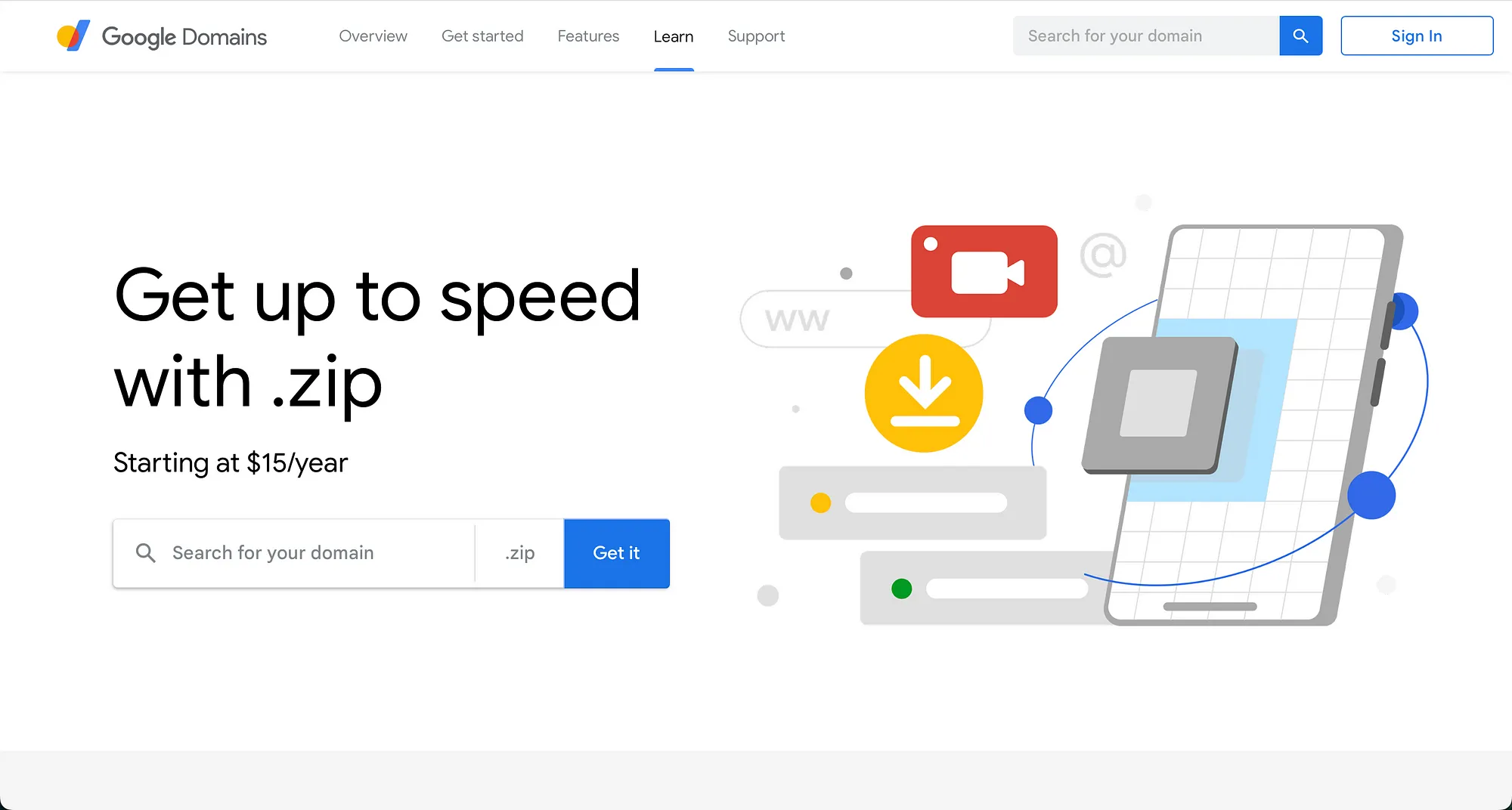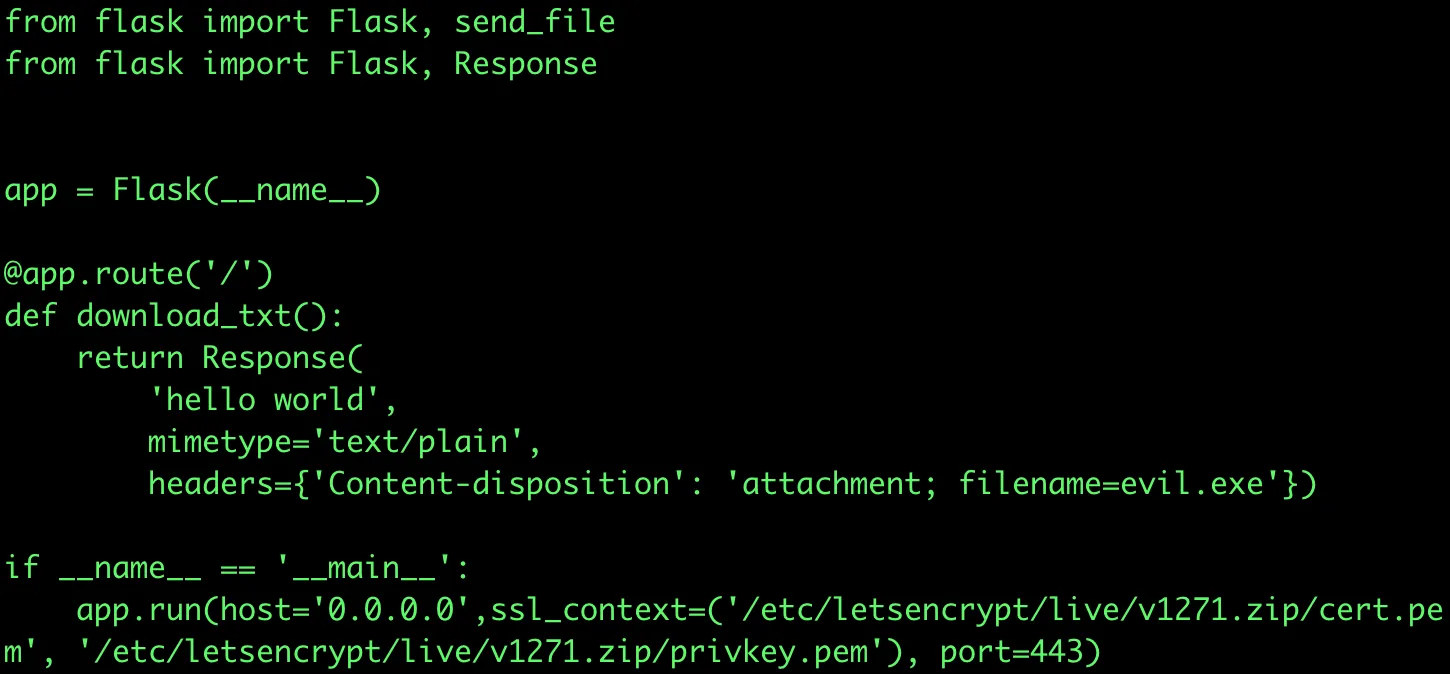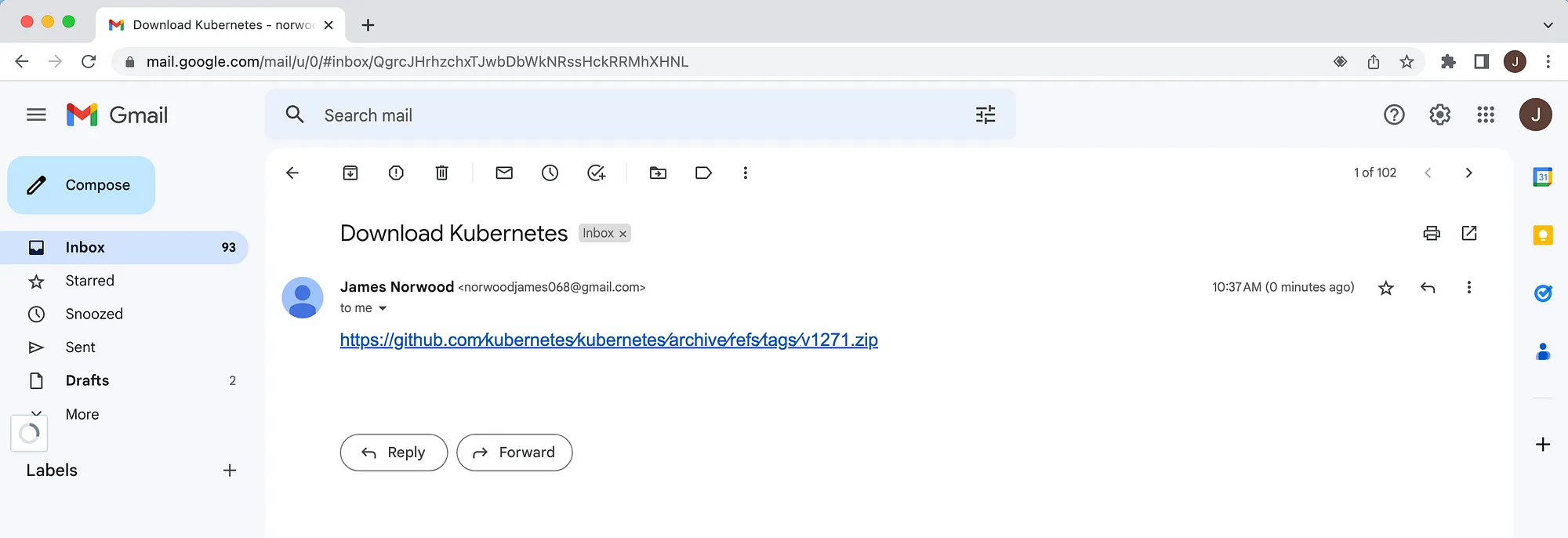The following is a summary on the dangers imposed by Google’s new top level domain: .zip. In short, attackers can fake themselves as links to trustful .zip files.
https://medium.com/@bobbyrsec/the-dangers-of-googles-zip-tld-5e1e675e59a5
Can you quickly tell which of the URLs below is legitimate and which one is a malicious phish that drops evil.exe?
https://github.com∕kubernetes∕kubernetes∕archive∕refs∕tags∕@v1271.zip
https://github.com/kubernetes/kubernetes/archive/refs/tags/v1.27.1.zip
This week, Google launched a new TLD or “Top Level Domain” of .zip, meaning you can now purchase a .zip domain, similar to a .com or .org domain for only a few dollars. The security community immediately raised flags about the potential dangers of this TLD. In this short write-up, we’ll cover how an attacker can leverage this TLD, in combination with the @ operator and unicode character ∕ (U+2215) to create an extremely convincing phish.

Source: https://domains.google/tld/zip/
As you can see in the breakdown of a URL below, everything between the scheme https:// and the @ operator is treated as user info, and everything after the @ operator is immediately treated as a hostname. However modern browsers such as Chrome, Safari, and Edge don’t want users authenticating to websites accidentally with a single click, so they will ignore all the data in the user info section, and simply direct the user to the hostname portion of the URL.
For example, the URL [https://[email protected]](https://[email protected],), will actually take the user to bing.com.

Source: https://cv.jeyrey.net/img?equivocal-urls
However, if we start to add slashes to the URL that comes before the @ operator, such as [https://google.com/[email protected]](https://[email protected],), our browser will start to parse everything after the forward slash as the path, and now the bing.com portion of the url will be ignored, and we will be taken to google.com.
So let’s say we were looking to craft a phishing url that contained slashes before the @ operator so it looked like the victim was visiting a google.com URL path, but we wanted it to direct the victim to bing.com.

Source: https://bugs.chromium.org/p/chromium/issues/detail?id=584644
According to this Chromium bug report from 2016, unicode characters U+2044 (⁄) and U+2215 (∕) are allowed in hostnames, but do not get treated as forward slashes by the browser. Both of these unicode characters resemble the legitimate forward slash character U+002F (/).
If we craft a url like:
it will direct the user to bing.com, as the U+2215 slashes are treated as part of the UserInfo portion of the url, instead of as the start of a path.
We can leverage this knowledge, and create a highly convincing phish of a legitimate .zip file with Google’s new .zip TLD.
Let’s use a Github code package as an example. If a user wants to download a copy of the open source software Kubernetes, they would visit the Github releases section and download the url from:
https://github.com/kubernetes/kubernetes/archive/refs/tags/v1.27.1.zip
Let’s take the URL above, and replace all the forward slashes after https:// with U+2215 (∕) slashes, and add the @ operator before the v.1.27.1.zip.
https://github.com∕kubernetes∕kubernetes∕archive∕refs∕tags∕@v1.27.1.zip
Visiting the URL above, will take us to the hostname portion of the URL, v1.27.1.zip. Unfortunately, the 1.zip domain has already been claimed, but we can go ahead and claim a similar URL, v1271.zip for $15.

We can spin up an EC2 with a simple Python Flask app and point the v1271.zip DNS record to our EC2. The Flask app will respond to any web request with an attachment evil.exe

Sample Flask App running on an EC2
Our malicious URL below, appears nearly indistinguishable from the legitimate URL:
Evil:
https://github.com∕kubernetes∕kubernetes∕archive∕refs∕tags∕@v1271.zipLegitimate: https://github.com/kubernetes/kubernetes/archive/refs/tags/v1.27.1.zip
In an email client, we could make it even more convincing, and change the size of the @ operator to a size 1 font, that makes it visually non-existent for the user, but still present as part of the URL

Example Phish with the @ operator at size 1 font
Here we can see a demo of a user receiving the example phish, and evil.exe immediately downloading from the v1271.zip server.

Detections
- Look for domains containing U+2044 (⁄) and U+2215 (∕)
- Look for domains containing @ operators followed by .zip files
- Always be careful about downloading files from URLs sent by unknown recipients, and hover over URLs before clicking to see the expanded URL path